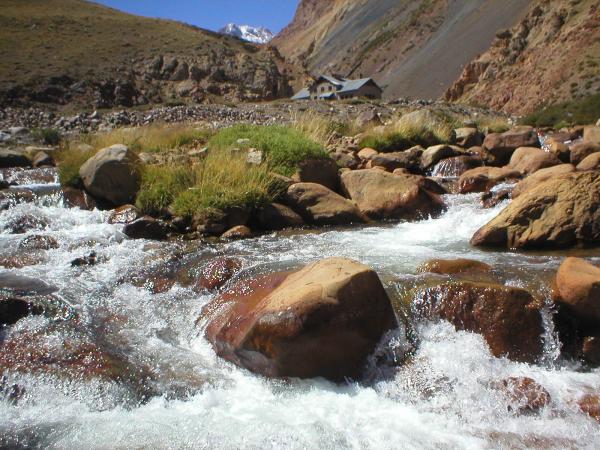Mendoza integrates the Cuyo Region, whose name is translated as “the place of the sand¨, but it is difficult to understand why considering that any person, placed anywhere in our city, would see a completely different landscape Let’s see why:
The geographic reality indicates that the inhabitants of Mendoza are lived in 4% of the total area, whose oasis were developed by the men, as a result of the domination and canalisation of the water resources, provided by the few mountain rivers.
Outside the limit of the artificial oases, in the West, the mountainous territory, there is the imposing Cordillera de los Andes.
To the East, lie the plains – “monte” and “payunia norpatagónica” – carrying vegetation adapted to a dry environment that is alternated with dunes. These plains are inapt for agriculture and barely tolerate a suffering livestock.
A salutary effect for the vines is the shortage of rainfall and air humidity, with even excessive sunshine during some summers. The Andes also provide height, which is about one thousand meters in Cuyo, which provides a marked extent and thermal amplitude as well as cooler temperatures than in other places with the same latitude. Finally, at the foot of the Andes abound alluvial soil, deep, stony with blocks and boulders, sandy and marshlands abound, poor in organic matter, gentle slopes and excellent drainage.
The rains, which vary each year from 100 to just over 300 millimetres (the majority occurring during the summer), compensate the deficit of irrigation. The vines need at least 500 millimetres of rainfall to thrive without irrigation.
The heat of summer extends up to the fall and rapidly absorbs any rain, because the ground is very dry. It is possible then to harvest the grapes as late as you want without fearing the bad weather.
In the soil and climate of Mendoza there are some limiting factors: the main one is drought, which affects the marginal areas of the oases, where there is no irrigation canals or water layers at a reasonable depth. Then, there are the frosts; a phenomenon that is repeated every year and usually affects only a few regions. It rarely extends itself to the entire province.
The Zonda wind, which presents itself as a hot and dry wind, with moderate to strong speed, often causes extensive damage to the agriculture in Mendoza due to a few main causes: dry air that produces the sharp rise of air temperature and destructive effects for its strength.
The last factor present is the hail. Because of it, it is necessary to use a defence on the crops, the diversification of vineyards and the mesh or anti-hail nets in the shape of a roof for the horizontal canopy vines or vertical on both sides of the trellis vineyard. The meshes in this case are collapsible to allow the harvest. There is also an improved fighting technique, originally Russian, of rockets fired from the ground against the clouds. Nowadays, the technology also consists of throwing silver iodide on the top of the hail clouds, but with small rockets, guided by meteorological radar, launched from aircrafts. They make the hailstones melt before reaching the ground.
Other no less important issues are the earthquakes, which often occur on a regular basis, but for them the wine industry is prepared with anti-seismic measures in their buildings. The pests and plagues are not a major drawback thanks to the healthy climate and soils. Despite this, new vineyards are planted on grafted clonal feet, selected from resistant American vines, franc foot, or grafted on other European varieties feet.






